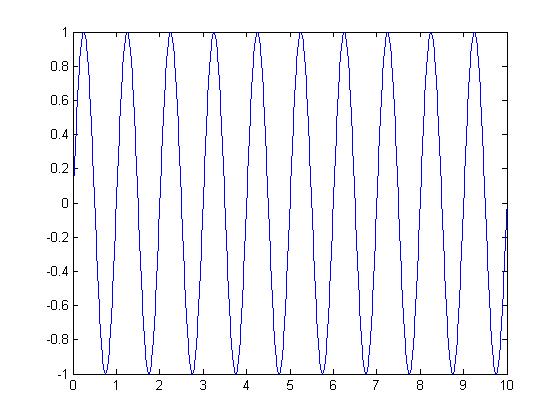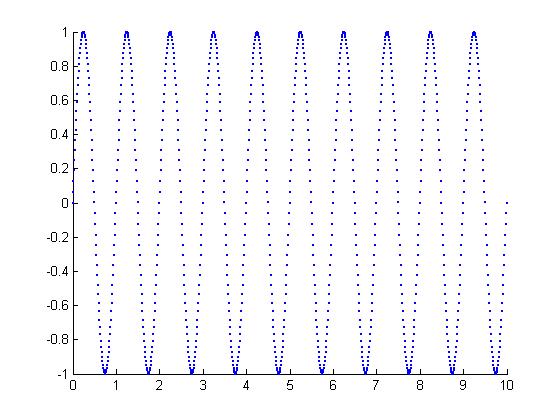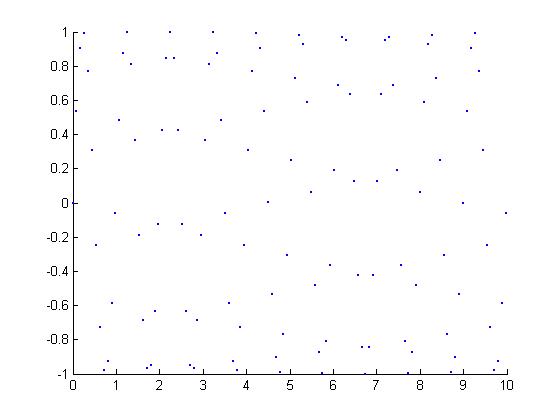(New page: Here I use the CT signal x=sin(2*pi*t): Image:Simple_sin_function.jpg Producing a periodic discrete time signal from the signal above: Image:Simple_sin_function_DT.jpg Changing...) |
|||
| Line 1: | Line 1: | ||
| − | Here I use the CT signal x=sin(2*pi*t): | + | Here I use the CT signal x=sin(2*pi*t) with a period of 1 sec: |
[[Image:Simple_sin_function_ECE301Fall2008mboutin.jpg]] | [[Image:Simple_sin_function_ECE301Fall2008mboutin.jpg]] | ||
| − | Producing a periodic discrete time signal from the signal above: | + | Producing a periodic discrete time signal from the signal above with sampling rate SR=0.01: |
[[Image:Simple_sin_function_DT_ECE301Fall2008mboutin.jpg]] | [[Image:Simple_sin_function_DT_ECE301Fall2008mboutin.jpg]] | ||
| − | Changing the sampling rate to produce a non-periodic DT signal: | + | Changing the sampling rate to produce a non-periodic DT signal SR=0.09: |
[[Image:Non_periodic_simple_sin_function_DT_ECE301Fall2008mboutin.jpg]] | [[Image:Non_periodic_simple_sin_function_DT_ECE301Fall2008mboutin.jpg]] | ||
Revision as of 10:59, 11 September 2008
Here I use the CT signal x=sin(2*pi*t) with a period of 1 sec:
Producing a periodic discrete time signal from the signal above with sampling rate SR=0.01:
Changing the sampling rate to produce a non-periodic DT signal SR=0.09:




